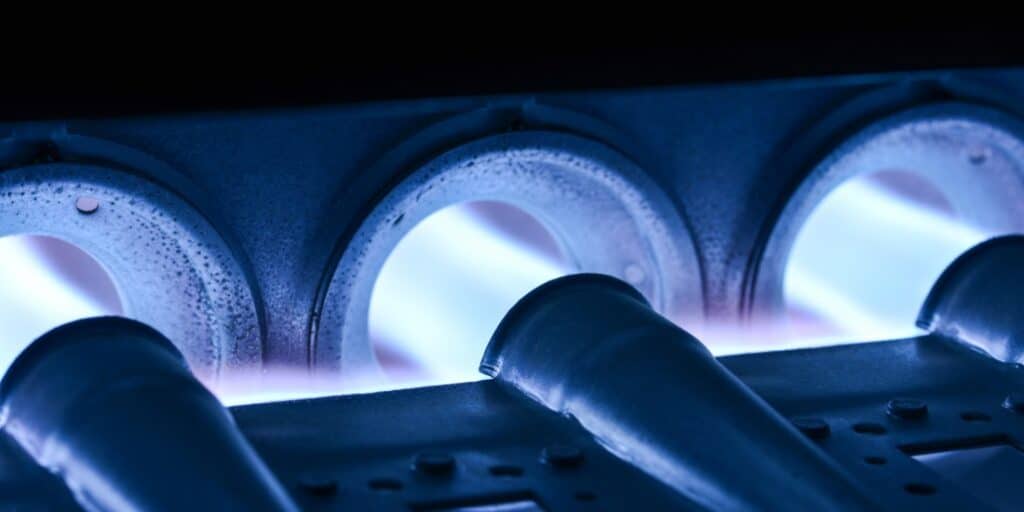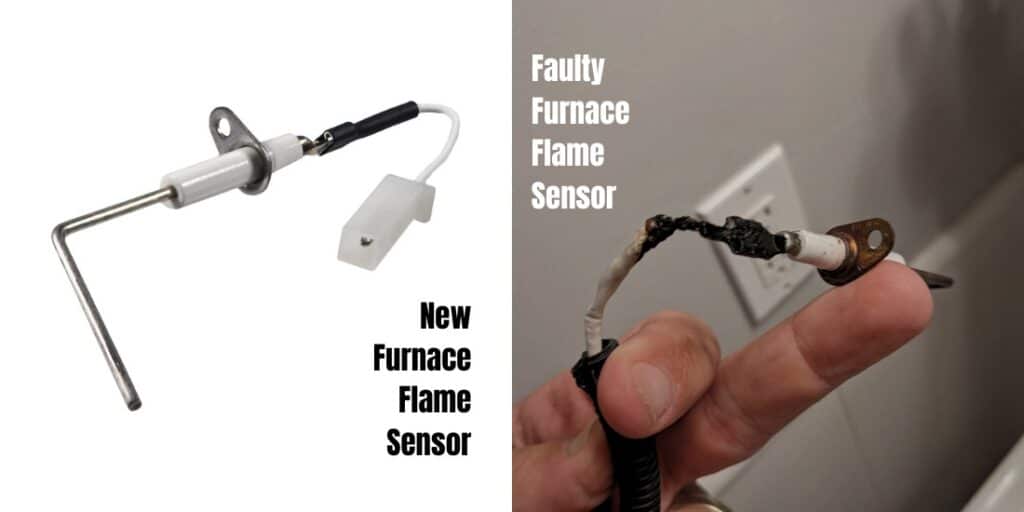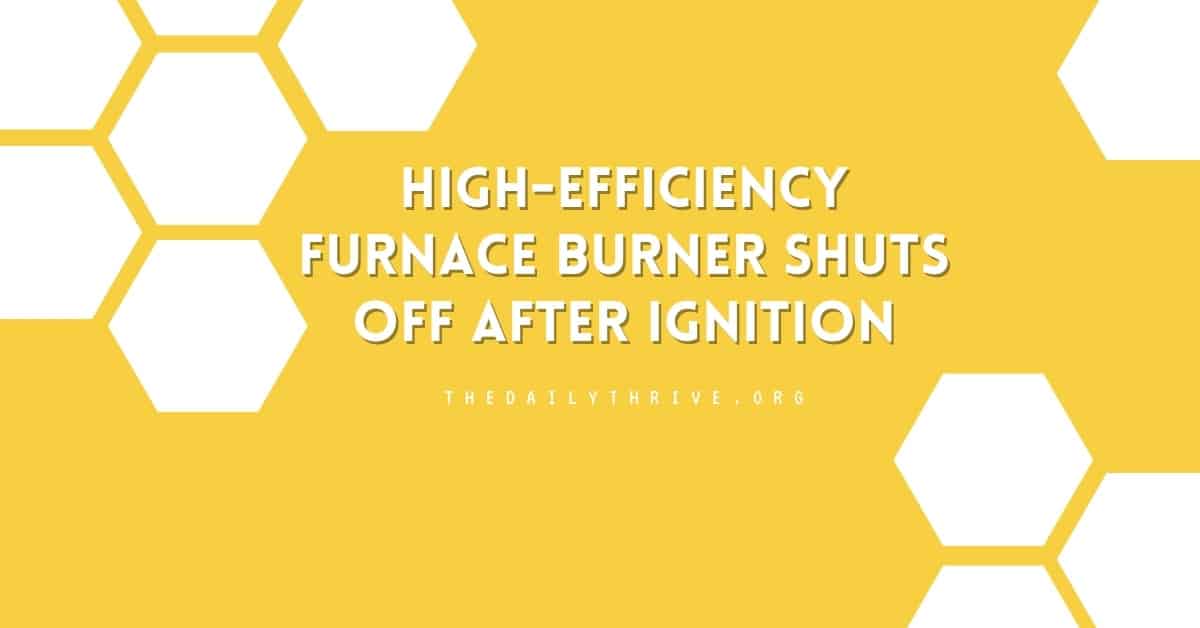As a seasoned HVAC technician, I’ve seen numerous furnace issues, but one that businesses often encounter is the premature shutdown of a high-efficiency furnace’s main burner after ignition. Addressing this effectively is essential for maintaining a consistently warm and safe environment.
The flame sensor is often the unsung hero after ignition, crucial for ensuring your furnace operates safely and efficiently. It detects the presence of a flame and, if absent due to a draft or fuel supply issue, signals the system to shut off the main burner. This prevents dangerous gas build-ups.
When a furnace doesn’t stay lit, a good first step is to test the flame sensor. If it’s dirty or malfunctioning, it may not detect the flame, causing the burner to shut off as a precaution, which can be particularly troubling during cold months. Understanding and troubleshooting the flame sensor can mean the difference between a minor operational hiccup and a full-scale heating crisis.
In the comprehensive guide below, we’ll explore the function of high-efficiency furnaces, detail the flame sensor’s role, and provide a step-by-step troubleshooting approach for main burner issues post-ignition.
Furnace Main Burner and its Role
Delving into the heart of a high-efficiency furnace, we find the main burner, the critical component where the combustion of natural gas converts to heat, essential for warming both businesses and homes. This combustion process is a meticulously coordinated interplay of fuel and air mixture, ignited to produce a steady, controlled flame.

An optimal main burner operation generates a robust and steady flame, efficiently heating large volumes of air that the blower fan circulates through the ductwork, delivering comfort to every room.
Beyond heat generation, the main burner is pivotal to the furnace’s overall efficiency. High-efficiency furnaces are designed to maximize heat extraction from the combustion process before venting the exhaust. The furnace features a secondary heat exchanger that retrieves additional heat from the exhaust gases, heat that would otherwise dissipate.
The main burner’s performance is crucial here; an erratic or weak flame results in reduced heat generation and less heat recovery by the secondary heat exchanger.
However, the furnace’s efficiency hinges on the main burner’s flame stability. A drafty environment, a faulty ignition system, or a clogged burner can cause the flame to extinguish shortly after ignition.
Such interruptions not only cool the indoor environment but also strain the furnace components as they struggle to compensate for the heat loss. Over time, this can cause wear and tear, unnecessary energy consumption, and, in the worst-case scenario, complete system failure.
Understanding and maintaining the main burner’s role is thus essential, not only for comfort but also for the continuity of operations and cost-effectiveness. It demands attention to detail and proactive maintenance strategies — expertise that I’ve developed over two decades in the HVAC industry.
Common Reasons for Main Burner Shut Off After Ignition
While the main burner shutting off shortly after ignition can be due to a variety of reasons, the main factor is often the flame sensor. This critical component ensures the furnace only operates when a safe flame is present. A faulty flame sensor may not recognize the flame, causing the system to prematurely halt the gas supply as a precaution, leading to the main burner’s shut off.
Several issues could cause your furnace’s main burner to shut off after ignition:
Faulty Flame Sensor
The flame sensor’s role cannot be overstated. This slender rod, usually sitting in the direct path of the flame, confirms the burner is lit and signals the furnace to continue the heating cycle.
When this sensor becomes coated in soot or corroded, it can fail to detect the flame—even if the burner is functioning properly—prompting the system to shut down to avoid the dangers of unburned gas.

This safety mechanism, while essential, can result in frequent and frustrating system resets when the sensor is not in optimal condition.
Dirty Air Filters
The health of a furnace is directly tied to its breathing—the airflow. Air filters act as the lungs of the system, straining out particles and protecting internal components from dust and debris.
However, when these filters accumulate too much debris, they choke the system, impairing the airflow. This can cause the heat exchanger to overheat, activating the furnace’s high-limit switch—a fail-safe that turns the burner off to prevent damage. This is the furnace’s cry for help, signaling it’s time to clean or replace the filters.
Issues with the Thermostat
A thermostat is the brain of the HVAC system, regulating temperature by communicating your heating needs to the furnace.
When it malfunctions or is incorrectly calibrated, it sends wrong commands, leading to the furnace turning on and off in short bursts, a condition known as furnace short cycling. This not only prevents proper heating but can also put undue strain on the furnace as it repeatedly tries to initiate the heating cycle.
Problems with the Exhaust Flue
The exhaust flue serves as an escape route for the combustion gases. It’s crucial that this path remains clear. Should it become obstructed by debris, nests, or even snow and ice, the furnace can’t vent these gases properly.
Modern high-efficiency furnaces are equipped with sensors that detect such blockages, automatically shutting down the burner if proper venting is compromised. This preventive measure is vital to prevent the build-up of carbon monoxide and other harmful gases within the premises.
Each of these issues can lead to the same problematic endpoint: the furnace’s main burner turns off soon after ignition, often leaving individuals without heat at the most inopportune times. Addressing these concerns requires a systematic approach, starting with the simplest fixes—such as cleaning the flame sensor and replacing air filters—before moving on to more complex solutions involving the thermostat and exhaust flue. It’s a delicate balance to strike, and understanding these common issues is the first step in safeguarding the efficiency and longevity of your furnace.
Troubleshooting Steps
When confronted with a furnace whose main burner shuts off after ignition, a systematic approach to troubleshooting can often save the day.
Here’s a more detailed look at the steps I take to address the issues:
- Checking the Flame Sensor: Clean the flame sensor with a fine emery cloth to ensure it can detect the flame accurately.
- Inspecting and Replacing Air Filters: Regularly check and replace air filters to prevent blockages.
- Assessing Thermostat Functionality: Verify the thermostat settings and wiring for any discrepancies.
- Evaluating the Exhaust Flue for Blockages: Inspect for any obstructions that could hinder the escape of combustion gases.
By following these troubleshooting steps carefully and methodically, most issues leading to a furnace’s main burner shutting off after ignition can be resolved.
However, when these steps don’t solve the problem, or if they reveal larger issues, it’s crucial to call in a certified HVAC professional. Complex issues, such as those related to the furnace’s internal components or gas supply, should be handled by a certified technician to ensure safety and proper repair. Safety is paramount, and certain furnace repairs should never be attempted as DIY projects.
Summary
Prompt attention to a main burner that shuts off after ignition can prevent further damage and restore your furnace’s efficiency. While some furnace issues can be resolved with a keen eye and a steady hand, the complexity of modern high-efficiency systems often demands professional expertise. For businesses relying on these systems, the costs of downtime go beyond the immediate discomfort—it can affect productivity and profitability.
Therefore, recognizing when to call in a certified HVAC technician is as important as any step in the troubleshooting process. Regular, professional maintenance is the best strategy to prevent unexpected shutdowns and to keep your furnace operating efficiently for years to come.






